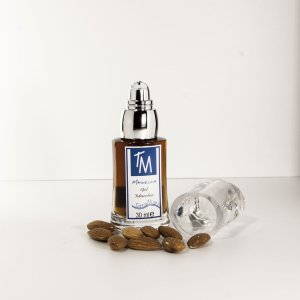ACTIVE GEL STAIN
Kojic acid (Kojic acid)
Kojic acid is a potent depigmentation of biotechnological origin that degrades melanin, the accumulation of which leads to the formation of stains, acting on the main enzyme that favorissce production: tyrosinase. Its use with alpha-hydroxy acids potentiates its action depigmenting and lightening.
PHYTIC ACID (Phytic acid)
Phytic acid is a compound naturally present in cereal which acts by binding iron ions, responsible for the formation of free radicals and lipid oxidation phenomena to skin aging basis. It also boasts strong depigmentation properties. For these characteristics it is used in cosmetics for the production of products in combination with alpha-hydroxy acids with antioxidant function and depigmenting.
INGREDIENTS / INGREDIENTS
Aqua
Kojic acid
Phytic acid
Hydroxyethylcellulose
Polysorbate 20
Fragrance / parfum
Phenoxethanol
imidazolidinyl urea
FEATURES:
cosmetic product containing Kojic acid and phytic acid with a high smoothing effect. Indicated to treat skins with wrinkles and signs of premature aging.
Practical solution in anti-skin spots gel, formulated with kojic acid and phytic acid. Even for home use.
Characteristics of anti stain gel
Anti spots cosmetic product containing Kojic acid and phytic acid with a high smoothing effect. Indicated to treat skins with wrinkles, premature aging and skin spots.
Kojic acid is a potent depigmentation biotech-derived that, penetrating deep, degrades melanin that builds up leads to the formation of stains. Phytic acid has strong depigmenting properties, in fact inhibits melanogenesis for its ability to bind to the "copper" and make it unavailable to the enzyme tyrosinase, which precisely controls the synthesis of melanin. Phytic acid also presents antioxidant properties and penetrates into the stratum corneum by adjusting the level of sebum secretion and the bacterial flora. Their use, combined with another alfaidrossiacido such as mandelic acid, potentiates the action depigmenting and lightening.
30ml bottle with dispenser
How does the gel spots
The action of the anti-stains acids is a rather complex mechanism that has gone out to inhibit the biosynthesis of melanin by acting and deactivating the enzyme responsible for processing of tyrosine, or tyrosinase. In addition to this their main skills also have antioxidant, antibacterial and antifungal properties.
This cosmetic in gel solution is applied topically, directly to the skin with skin blemishes and signs of premature aging. The frequency of application depends on the problem to be treated and the type of skin, in fact a hypersensitive skin should not be "attacked" by a frequent use of the product while on a thickened skin can also be used twice a day.
Active principles and INCI
See details in
How to use the anti spots gel
Home:
Apply with a cotton pad soaked lightly on the most obvious spots or lightly all over the face. Do not rinse, wipe with a dry cloth and apply balancing cream. If you plan to expose yourself to the sun apply a sunscreen with a high protection factor.
Example of treatment in the cabin:
exfoliating and anti stains mandelic acid
- A skin cleansing, distribute the preparatory solution on the face, neck and décolleté using a cotton soaked Faldini, leave for 2 minutes; do not rinse.
- Apply another layer of discrete Acid Solution with a fan brush, avoiding eyes and mucous membranes, leave at least 5 minutes. remove with moistened sponges. With the use of a cotton swab soaked in solution rub the most obvious spots; do not rinse.
- With a face brush, distribute evenly the Gel Mask gel mask with hyaluronic acid and leave in 15 minutes; remove with moistened sponges.
- Apply the gel spots with a cotton soaked Faldini on evenly spots without abound with the product. Leave for a moment and dab with a dry cloth. Do not rinse.
- Complete the treatment with a gentle massage applying Rebalancing Cream.
Serving Suggestions
By day, after applying the gel anti stains on the skin, it is recommended to apply a thick layer of sunscreen (especially in summer), to preserve the skin from stimulation of new melanin.






Grade Comments (0)